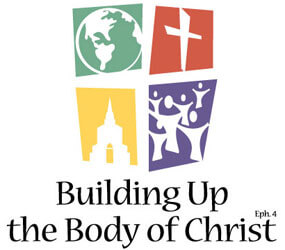By George P. Matysek Jr.
The Archdiocese of Baltimore has embarked on a comprehensive parish planning process that leaders hope will strengthen the evangelizing mission of the church.
Known as “Building up the Body of Christ,” the initiative calls for parishes to undergo assessment and reorganization to make better use of resources and available clergy while also better serving the community.
Building up the Body of Christ will examine three areas: the number and location of parishes and their liturgical and evangelization ministries; the number and availability of priests and other human resources; and parish and archdiocesan resources, including financial and physical resources.
Archbishop Edwin F. O’Brien, apostolic administrator, said he recognizes that the process will be challenging. Priests have told him, however, that it is urgently needed. If current trends hold, the number of active priests in the next 15 years will be reduced from 153 to fewer than 100. Many parishes are facing declining Mass attendance and are dealing with aging facilities. Planning is needed to address those realities and others, he said.
“Even though hard decisions will have to be made, I hope that our priests remain united with their bishop and with one another and they are able to motivate our people to see the bigger picture that this is for the long-range good of the church,” Archbishop O’Brien said. “Unless we do something now, their next generations are going to pay the price. It’s really a sacrifice on the part of all of us for new life and for a stronger community throughout the archdiocese.”
The archbishop emphasized that no decisions have been made going into the planning process.
“We’d be very foolish and dishonest, really, if we went into this thing knowing this has to go or that has to stay,” he said. “We hope we come up with fair and balanced series of decisions.”
Because Archbishop O’Brien has taken up a new position as Pro-Grand Master of the Equestrian Order of the Holy Sepulcher of Jerusalem in Rome, it will be up to his Baltimore successor to make decisions on recommendations that come out of the planning process. In the next 12 to 15 months, Bishop Denis J. Madden and Bishop Mitchell T. Rozanski, auxiliary bishops, will participate in public meetings and meet with the newly formed Office of Research and Planning.
Archbishop O’Brien will appoint an Archdiocesan Parish Planning Board comprised of the bishops, the vicar general and 22 additional members including 10 priests, 10 lay people, one deacon and one woman religious.
In the plan’s first phase, the planning efforts of other dioceses will be examined, as will previous merger and cluster experiences in the Archdiocese of Baltimore and recommendations from research and non-profit organizations concerning parish and church management.
Working with the Center for Applied Research in the Apostolate and the Office of Clergy Personnel, the Office of Planning and Research will coordinate research to support the development of a 20-year forecast for priest personnel availability. Other demographic studies will also be conducted.
The first phase of the planning process will also incorporate listening sessions, a study of priestly vocations and the development of evangelization and communication plans.
The second phase will include the establishment of parish leadership teams that will review parish profiles provided by the archdiocese, inventory ministries and prepare self-assessments.
In the third phase, parishes will work in clusters to develop a plan for the future within their cluster, keeping in mind a forecast of the number of priests available for ministry.
The planning board will make its final recommendation to the archbishop in the final phase. The archbishop will then announce his decision on cluster models.
Several regions of the archdiocese have already begun cluster planning. In Cumberland, five area parishes united this year to form one new parish known as Our Lady of the Mountains. In Fells Point, St. Michael closed this summer and relocated its English-speaking and Spanish-speaking parishioners to Sacred Heart of Jesus in Highlandtown. Spanish-speaking parishioners of Our Lady of Pompei also relocated to Sacred Heart, becoming part of a new bilingual, multicultural faith community.
“We are grateful for the Cumberland experience because it shows others that people are capable of change,” Archbishop O’Brien said. “That’s a very old and well-rooted Catholic community and people were proud of their parishes, but in their own way, with help of Bishop Mitch and other lay leadership, they were able to take it step by step.”
While some people are still hurting from the loss of St. Michael, the archbishop said the Fells Point experience has also been positive.
“Once again,” he said, “once they see the positives, maybe they can put the negatives into better perspective.”
Bishop Rozanski said he believes the planning process will be a chance for renewal.
“I think it’s our opportunity to look at our history, look at who we are as God’s people and look at how we can move forward into the future being a dynamic presence,” he said, “especially in a world where we find so many things that are against us in terms of culture, isolation and a personal sense of individualism – and, as Pope Benedict XVI says, a dictatorship of relativism. We have to be a dynamic witness against all that and for the Lord.”
Archbishop O’Brien said the planning process will be transparent throughout.
“It’s going to take some time and some trust and some humility on the part of all of us,” he said, “to make sure that we put our own comfort and our own pride secondary and see the common good as the outcome.”
Visit buildingupthebodyofchrist.org for more information.


